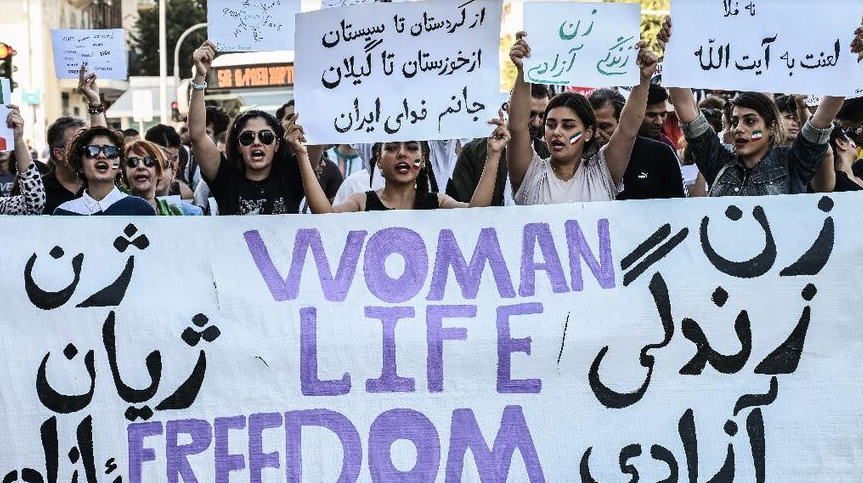Iran’s Hijab Protests
October 28, 2022
For more than a month, protests demanding change have erupted throughout numerous cities in Iran, including Tehran, Esfahan, and Shiraz. Their cause has quickly spread not only through the nation, but the world. The protests oppose Iran’s strict modesty laws, specifically regarding women covering their hair, and their violent violation consequences.
The hijab is a garment worn by Muslim women that covers the head, neck, and shoulders. According to the Iranian government’s estimates, Muslims make up 99.4% of Iran’s population. In Iran, it has been required by law that women cover their hair in public with a hijab or headscarf since the Islamic Revolution in 1979. The punishments for breaking these laws are severe, for example, “Iranian law states that ‘anyone who explicitly violates any religious taboo in public’ should be imprisoned for up to two months, or flogged with 74 lashes” (ABC News). These brutal punishments can be received as a result of not wearing a hijab or even simply for not wearing one properly. Attempts at protest against the laws have occurred for many years, but the cause has gained much traction following a recent event.
The current protests against these laws can be traced back to September 13th, 2022, when the death of Mahsa Amini followed her arrest in violation of the hijab laws in Tehran, the capital city of Iran. This tragic event inspired many to speak out, using the slogan “Women, Life, Freedom,” against the harsh restrictions and punishments faced by women due to the laws. The initial protests broke out following Amini’s funeral service. Since then, many protests have been held.
The recent protests are not entirely responsible for creating and spreading the position against the laws, but they have made the concerns of Iranian women, as well as many others, increasingly clear. Iranian women and girls of all ages have taken a stand in protesting. Women have displayed their objection to the laws through public acts of removing and burning their hijabs or headscarves and cutting their hair. Younger girls have expressed their opposition in schools, playgrounds, and have also joined women in protest on the streets.
Although women have been at the forefront of the protests, “Men and teenage boys have also participated in large numbers and backed the women’s demands” (BBC News). The protests are widespread and have many participants in Iran. Additionally, the protesting has crossed national borders, with many people from other countries speaking out and sharing support for the movement. For example, public figures of different countries have used their social media platforms to spread awareness of the situation. Washington D.C. is one of multiple places where people have marched and chanted in solidarity with Iranian women.
The acts of protest have been met with a negative response from Iran’s government. They have responded with force against the protesters, which has resulted in violence and deaths of protesters. According to HRANA, a minimum of 233 people had been killed in protest from the 17th of September to the 15th of October. They have also attempted to weaken the protests by cutting off internet access within Iran. According to the U.S. Department of State, “…the Iranian government has to a large scale shut down the Internet yet again for most of its 84 million citizens nationwide by cutting off… access entirely.” This response from Iran has been condemned by government statements of other countries.
In spite of Iran’s response, the protesters have not been discouraged and have not stopped their fight. Awareness of the cause is continuing to be shared and spread worldwide, and many of the people that have unified over the cause are still making their voices heard in protest.



